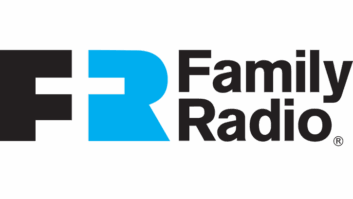A New Jersey radio broadcaster continues to plead for the FCC to forgo a power increase for HD Radio stations in the United States, saying the proposal would leave Class A stations “out in the cold.”
Press Communications has previously submitted technical studies that it says show interference to significant numbers of Class A FM station listeners from first-adjacent out of market Class B stations with an HD power increase. The broadcaster believes harmful interference to listening audiences will be especially destructive in densely-populated areas, such as New Jersey, with numerous short-spaced FM stations.
“Unlike analog-induced interference, the HD interference will manifest itself to radio listeners as noise or a diminution of the co-channel station’s analog signal, something that radio listeners are ill-adept at identifying,” Press Communications tells the FCC.
The FCC is currently considering a proposal from the National Association of Broadcasters and Xperi, the developer of HD Radio, that, if adopted, would raise the maximum power level for digital FM radio stations. The proposed updated formula would allow additional radio stations to increase power without prior authorization from the commission.
Press Communications, which owns five Class A FMs and one AM radio station in New Jersey, says lower-power Class A FM stations — often at 3 kW — along with FM translators and LPFM stations are especially vulnerable to an HD Radio power increase.
[Related: “Radio Owner Says Digital FM Power Increase Would Hurt Small Broadcasters“]
Press Communications CEO Bob McAllan says the Class A community as of now is largely shut out of viable and useful HD Radio digital participation.
“If HD Radio is to become an industry standard, it needs to work for every broadcaster, not just the high-power stations in major markets. As currently presented, many, if not most, Class As are largely left out in the cold, particularly in the crowded northeast U.S.,” McAllan told Radio World in an email.
HD Radio was “an ill-conceived attempt to digitize an already overcrowded FM band,” McAllan said, “without destroying the misguided hieratical order of high-power stations in central cities, while leaving mostly scraps (Class As) for local service in much of the highly populated New Jersey suburbs.”
For example, McAllan says he believes one of his stations, WKMK(FM), licensed to Monmouth County, N.J., will lose audience in states’ primary commuting corridors if the FCC adopts the proposed power increase.
“Our extensive HD engineering studies show much, if not all of that valuable listenership will be lost if HD co-channel WUMR in Philadelphia is allowed to increase HD power beyond what is currently authorized (-17 dBc). An HD power upgrade will also expand existing interference areas within our 60 dBu contour in Monmouth Ocean which should come as no revelation since WUMR is 16.8 km short to WKMK,” McAllan says.
Press Communications says it believes the FCC proceeding “as a whole is mostly void of technical studies on the impact of digital power increases beyond -17 dBc in relation to Class A stations,” while Press Communications has commissioned numerous studies of the impact of HD Power increases on Class A stations.
[Related: “Aviation Industry Requests More Time to Evaluate HD Radio Proposal“]
The broadcaster also asks that the FCC include a remedy for interference from a Class B or B1 station to any first-adjacent Class A station if it adopts the new rules. “This right of redress means, for all practical purposes, any Class B or B1 station operating with HD power levels in excess of -17 dBc in the direction of a Class A station is a secondary service in the same way as FM translators for interference purposes until any first-adjacent channel station has the opportunity for a hearing,” it told the FCC.
In addition, the company asks the FCC to develop new procedures to protect a Class A station’s audience outside of its 60 dBu contour but within its 45 dBu contour.
Further, Press Communications says the commission — thanks to an already-crowded FM band — should consider the issue of radio receiver technology. In the pleading it asks the FCC to develop minimum receiver standards to properly evaluate the overall relationship of transmission and receiver performance.
“The FCC continues to adhere to its transmission standards, but has failed to consider the vastly improved receiver technology in today’s radios, particularly those in automobiles where most listening takes place,” Press Communications writes.
iHeartMedia, Cox Media Group and Beasley Media Group in comments have expressed support for the digital radio power increase and say protections and processes are already in place to protect smaller analog FMs.
Press Communications includes a number of exhibits in the proceeding (MB22-405) to support its argument against the HD Radio power increase, which can be viewed in the commission’s ECFS system.







